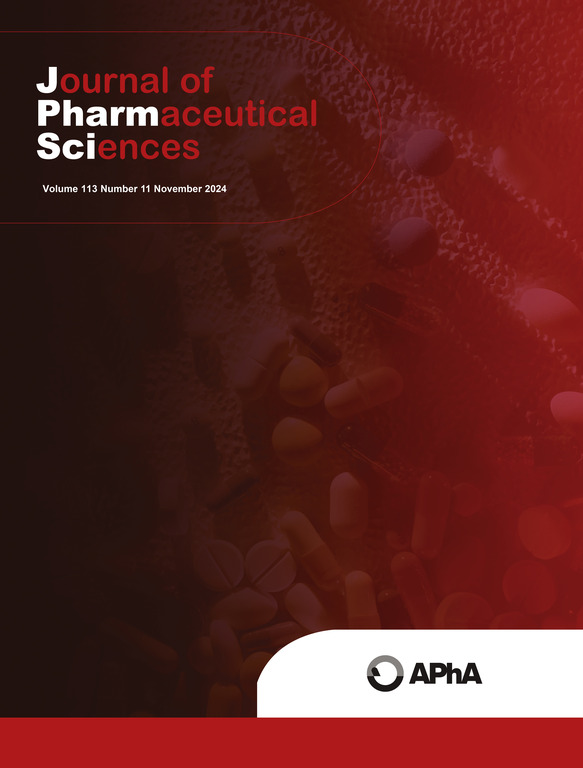贾巴拉果汁对 CYP3A4 和 CYP2C19 活性的抑制动力学及相关抑制成分的鉴定。
IF 3.7
3区 医学
Q2 CHEMISTRY, MEDICINAL
引用次数: 0
摘要
众所周知,一些柑橘类水果会抑制肠道细胞色素 P450(CYP)酶,从而引起临床上重大的药物相互作用。本体外研究旨在探讨日本柑橘类水果--不含呋喃香豆素(如 6',7'-二羟基佛手柑素)的柚子汁对 CYP3A4 和 CYP2C19 的抑制动力学,并确定抑制性化合物。利用重组 CYP 制剂及其各自的底物在体外测定了 CYP3A4 和 CYP2C19 的活性水平。通过分离刺五加汁的乙酸乙酯提取物(EAE),分离并确定了抑制 CYP3A4 的化合物。然后,分析了 EAE 及其抑制化合物对 CYP3A4 和 CYP2C19 的抑制作用随时间变化的动力学。结果发现,刺五加果汁的 EAE 对 CYP3A4 的抑制作用具有时间依赖性。经鉴定,3,3',4',5,6,7,8-七甲氧基黄酮(HpMF)和 3,3',4',5,6,7-六甲氧基黄酮(HxMF)这两种黄酮类化合物对 CYP3A4 有抑制作用。HpMF 和 HxMF 以浓度和时间依赖性方式抑制 CYP3A4 活性,抑制常数(KI)分别为 10.0 和 7.90 µM,最大失活速率常数(kinact,max)分别为 0.00856 和 0.0134 min-1。即使采用预孵育,EAE 也不会抑制 CYP2C19。这些研究结果表明,刺五加汁可能会通过对肠道 CYP3A4 的时间依赖性抑制作用而导致食物与药物之间的相互作用。本文章由计算机程序翻译,如有差异,请以英文原文为准。
Kinetics of the inhibition of CYP3A4 and CYP2C19 activity by jabara juice and identification of the responsible inhibitory components
Some citrus fruits are known to cause clinically significant drug interactions by inhibiting intestinal cytochrome P450 (CYP) enzymes. This in vitro study aimed to investigate the kinetics of the inhibition of CYP3A4 and CYP2C19 by the juice of jabara, a Japanese citrus fruit that does not contain furanocoumarins such as 6′,7′-dihydroxybergamottin, and to identify the inhibitory compound(s).
CYP3A4 and CYP2C19 activity levels were determined in vitro using recombinant CYP preparations and their respective substrates. The ethyl acetate extract (EAE) of jabara juice was separated to isolate and identify the compound(s) that inhibited CYP3A4. Then, the time-dependent kinetics of the inhibition of CYP3A4 and CYP2C19 by the EAE and its inhibitory compound(s) were analyzed.
The EAE of jabara juice was found to inhibit CYP3A4 in a time-dependent manner. Two flavonoids, 3,3′,4′,5,6,7,8-heptamethoxyflavone (HpMF) and 3,3′,4′,5,6,7-hexamethoxyflavone (HxMF), were identified as the responsible compounds. HpMF and HxMF inhibited CYP3A4 activity in a concentration- and time-dependent manner, with inhibition constants (KI) of 10.0 and 7.90 µM and maximal inactivation rate constants (kinact,max) of 0.00856 and 0.0134 min−1, respectively. The EAE did not inhibit CYP2C19, even when preincubation was employed. These findings imply that jabara juice may cause food-drug interactions via time-dependent inhibition of intestinal CYP3A4.
求助全文
通过发布文献求助,成功后即可免费获取论文全文。
去求助
来源期刊
CiteScore
7.30
自引率
13.20%
发文量
367
审稿时长
33 days
期刊介绍:
The Journal of Pharmaceutical Sciences will publish original research papers, original research notes, invited topical reviews (including Minireviews), and editorial commentary and news. The area of focus shall be concepts in basic pharmaceutical science and such topics as chemical processing of pharmaceuticals, including crystallization, lyophilization, chemical stability of drugs, pharmacokinetics, biopharmaceutics, pharmacodynamics, pro-drug developments, metabolic disposition of bioactive agents, dosage form design, protein-peptide chemistry and biotechnology specifically as these relate to pharmaceutical technology, and targeted drug delivery.

 求助内容:
求助内容: 应助结果提醒方式:
应助结果提醒方式:


